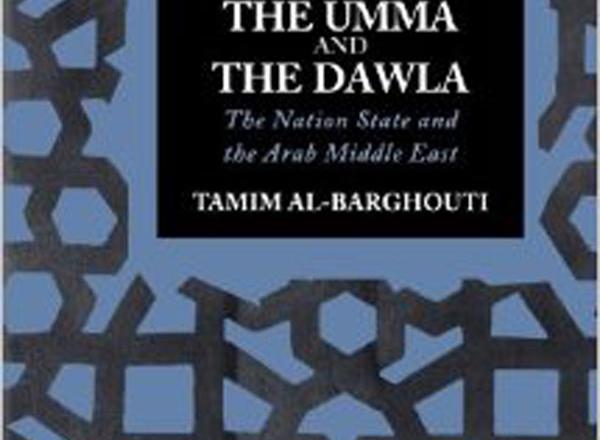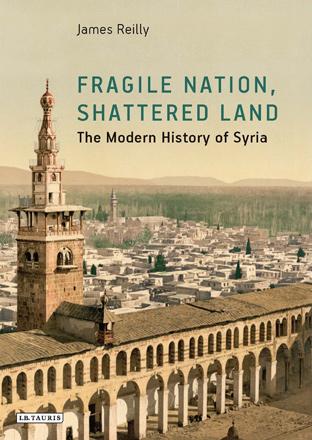You are here
Where true loyalty lies
By Sally Bland - Sep 28,2014 - Last updated at Sep 28,2014

The Umma and the Dawla: The Nation-State and the Arab Middle East
Tamim Al Barghouti
London: Pluto Press, 2008
Pp. 240
Tamim Al Barghouti has become very popular as a poet. In “The Umma and the Dawla”, he applies the analytical side of his intellect, but perhaps there is a connection. Besides creating beauty, good poets are exceptionally perceptive, enabling them to reveal the hidden essence of things. Moreover, in Islamic thought, there is a strong link between poetic beauty and truth, as evidenced in the Koran.
By revisiting Arab/Islamic history and the linguistic roots of pivotal terminology, Barghouti reaches conclusions that may be surprising to those, including this reviewer, who have approached modern Middle East history primarily through the lens of the confrontation between colonialism (imperialism) and Arab nationalism. While Barghouti’s view of colonialism is not surprising, his questioning of the roots and nature of nationalism runs counter to many other historical accounts, both Western and local.
This book has many themes and sub-themes, but can overall be seen as an attempt to clear up misunderstandings about Islam and Arab history, in order to explain why the present-day states in the Middle East have “failed to meet the challenge of Zionism, create some sort of Arab or Islamic unity, and achieve development and social justice.” (p. 1)
Among the misunderstandings is that the Arabic word “Umma” is usually understood to mean nation, while “Dawla” is translated as state, when, in fact, these two terms are quite different from their English counterparts. While a nation is assumed to have a racial component and “the state is the end, aim and purpose of the nation,” implying a stable arrangement and defined territory, “the Umma is non-territorial and non-racial” but rather composed of a group of people who adhere to a common belief, ideology, purpose and direction. (p. 36)
“Dawla”, on the other hand, “refers to any authoritative political arrangement. It is temporary, not territorially fixed and usually associated with the ruling elite.” (p. 57)
Thus, sovereignty, loyalty, ultimate authority and legitimacy are associated with the “Umma”, not the “Dawla”, and the latter is accountable to the former even if it does not rule over all its members.
Roughly half the book covers how these two concepts evolved and were materialised from the early days of Islam until Ottoman times, and how this shaped people’s thinking and affects their behaviour up until today, including “the rise of non-territorial Muslim organisations in global politics”. (p. 77)
In describing indigenous, pre-colonial political culture, based on affiliation to the “Umma”, Barghouti shows that “religious feelings in the world of Islam cannot be separated from political affiliations.” (p. 196)
While differences between Christian sects arise from doctrinal or metaphysical disputes, those between Muslim sects arise from political disagreements.
The second half of the book covers the various types of nationalism practised in the region, whether local or pan-Arab, which in Barghouti’s analysis have no indigenous roots, but were derived from European sources, i.e., tied to the colonial discourse. As a result, “the theoreticians and politicians of such nationalist movements were continuously attempting to find a compromise that reconciles their nationalisms with the native sense of identity that revolves around the Umma.”(p. 77)
“The colonial redefinition of Arabs and Muslims into nation-states created a situation where Arabs and Muslims had two contradictory foci of loyalty” — the colonially imposed nation state and the “Umma”. (p. 67)
A historical review of events from Napoleon’s 1798 invasion of Egypt, to Bush’s invasion of Iraq, illustrates that the separate Arab states were doomed to fail, and even pan-Arab movements, such as Nasserism and the Baath, were unable to resolve the structural contradiction imposed by colonialism. It proved impossible to both fulfil their people’s needs and aspirations, and satisfy colonial demands, to be both legitimate and subordinate. This was especially true, because in addition to raw materials, “security has always featured strongly on [the colonial powers’] wish list when it came to the Middle East.” (p. 97)
Barghouti’s analysis is brilliant, objective and well documented; his arguments are persuasive, but in his dedication to exposing the colonial roots of nationalism, he borders on depriving Arabs of agency. Were not some of the secular and modern ideas associated with pan-Arab movements derived from indigenous experience? Nonetheless, for a book completed seven years ago, it is remarkably predictive.
The most recent events, which are erasing some colonial borders and reshuffling regional alliances, add credence to its overall analysis. Barghouti’s closing remarks are worth pondering: “My prediction is that the current war in the region, between the United States and various Islamic organisations, will have two results… First, it will end America’s unipolar control of the world, and second it will change Islam beyond recognition.” (p. 212)
Related Articles
Fragile Nation, Shattered Land: The Modern History of SyriaJames A. ReillyBoulder/London: Lynne Reinner Publishers, 2019, Pp.
The embassy of Ukraine in Amman on Tuesday expressed its appreciation of a Greater Amman Municipality council decision to name a street after Taras Shevchenko (1814-1861), a renowned Ukrainian poet.
Shifting Sands: The Unravelling of the Old Order in the Middle EastEdited by Raja Shehadeh and Penny JohnsonUS: Olive Branch Press/Interlink














